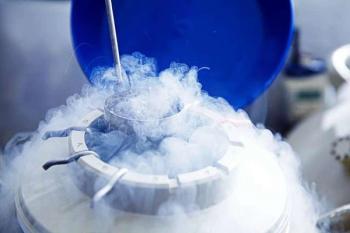
The Double Decidual Sac Sign
One of the problems with sonography of the early pregnancy is the inability to clearly determine if the gestation sac is intrauterine or extrauterine (ectopic) in nature. This task is even more complicated by the controversies arising from whether the “sac” seen is a true sac or a pseudosac of ectopic pregnancy.
One of the problems with sonography of the early pregnancy is the inability to clearly determine if the gestation sac is intrauterine or extrauterine (ectopic) in nature. This task is even more complicated by the controversies arising from whether the “sac” seen is a true sac or a pseudosac of ectopic pregnancy.
What are the signs of true intrauterine pregnancy?
The following signs clearly demonstrate the presence of an intrauterine pregnancy:
1) The presence of an embryo in the gestation sac in the uterine cavity
2) The presence of yolk sac in the intrauterine gestation sac.
Both the above signs clearly show that the gestation sac contains an embryo or is highly suggestive of a viable intrauterine pregnancy thus ruling out the possibility of an ectopic pregnancy. Of course there is a very small chance of a co-existing intra and extra uterine pregnancy (hetero topic pregnancy). However, this possibility is relatively too remote to be seriously considered in most cases. The normal gestation sac is seen at 4.5 weeks of gestation or a diameter of 5 mm. The yolk sac should be seen at 5 to 6 weeks of gestation whilst the embryo is visualized at a little under 6 weeks with its characteristic cardiac activity. The gestation sac in normal circumstances is seen as an anechoic space surrounded by a hyperechoic rim measuring around 2mm. in thickness.
What happens before the embryo or even the yolk sac is visualized?
It is during the period from 4 to 6 weeks of gestational age that the embryo or yolk sac is not visualized which creates a dilemma whether this sac is a true gestation sac or a pseudosac of ectopic gestation. It is in such cases that two signs are used to differentiate the above two entities.
These two signs are: 1) intradecidual sign and 2) double decidual sign.
The intradecidual sign is seen before 5 weeks age as a small anechoic area (sac) on either side of the central endometrial echo (uterine cavity line) within the thickened decidua. At this stage the gestation sac is too small to deform the uterine cavity line.
A little later, around just after 5 weeks, the double decidual sac sign is seen. This is seen as a hyperechoic ring (the deciduas capsularis), partially surrounded by another hyperechoic ring (the decidual parietalis). These two layers of the decidua are separated by an anechoic space- the fluid within the uterine cavity. Where both layers of the decidua capsularis and parietalis merge is the decidua basalis. The decidua basalis represents the site of future placenta formation. The images below show the typical features of this ultrasonographic sign seen in a gestation sac of 4 weeks 6 days in size.
By contrast, the pseudosac of ectopic pregnancy is seen as a tear drop or elliptical shaped fluid collection within the uterine cavity lacking the typical findings of a yolk sac or (earlier) the presence of double decidual sac sign or the intradecidual sign.
What are the pitfalls of using the double decidual sac sign?
Some radiologists prefer to use the intradecidual sign rather than the double decidual sac sign as it is said to be more precise and more often visible. Also, they believe that very often the double decidual sac sign may be visualized much later than 6 weeks, in many instances, by which time the embryo or yolk sac are clearly visualized. They have noted that the early gestation sac often does not produce any significant deformity of the uterine cavity line and hence resulting in non visualization of this important sign (double decidual sac sign).
References:
References:
1)
2)
3)
4)
Newsletter
Get the latest clinical updates, case studies, and expert commentary in obstetric and gynecologic care. Sign up now to stay informed.
















